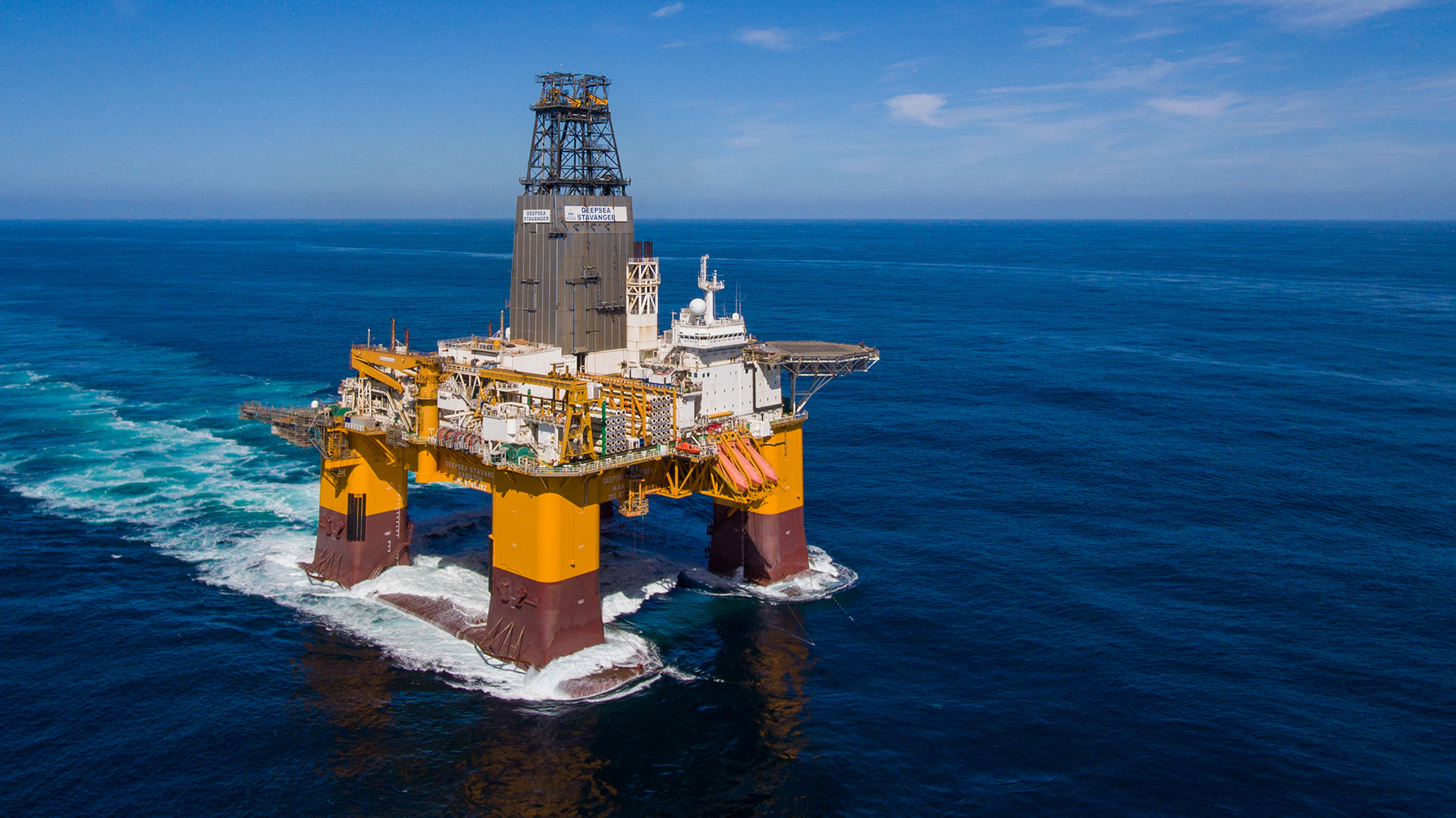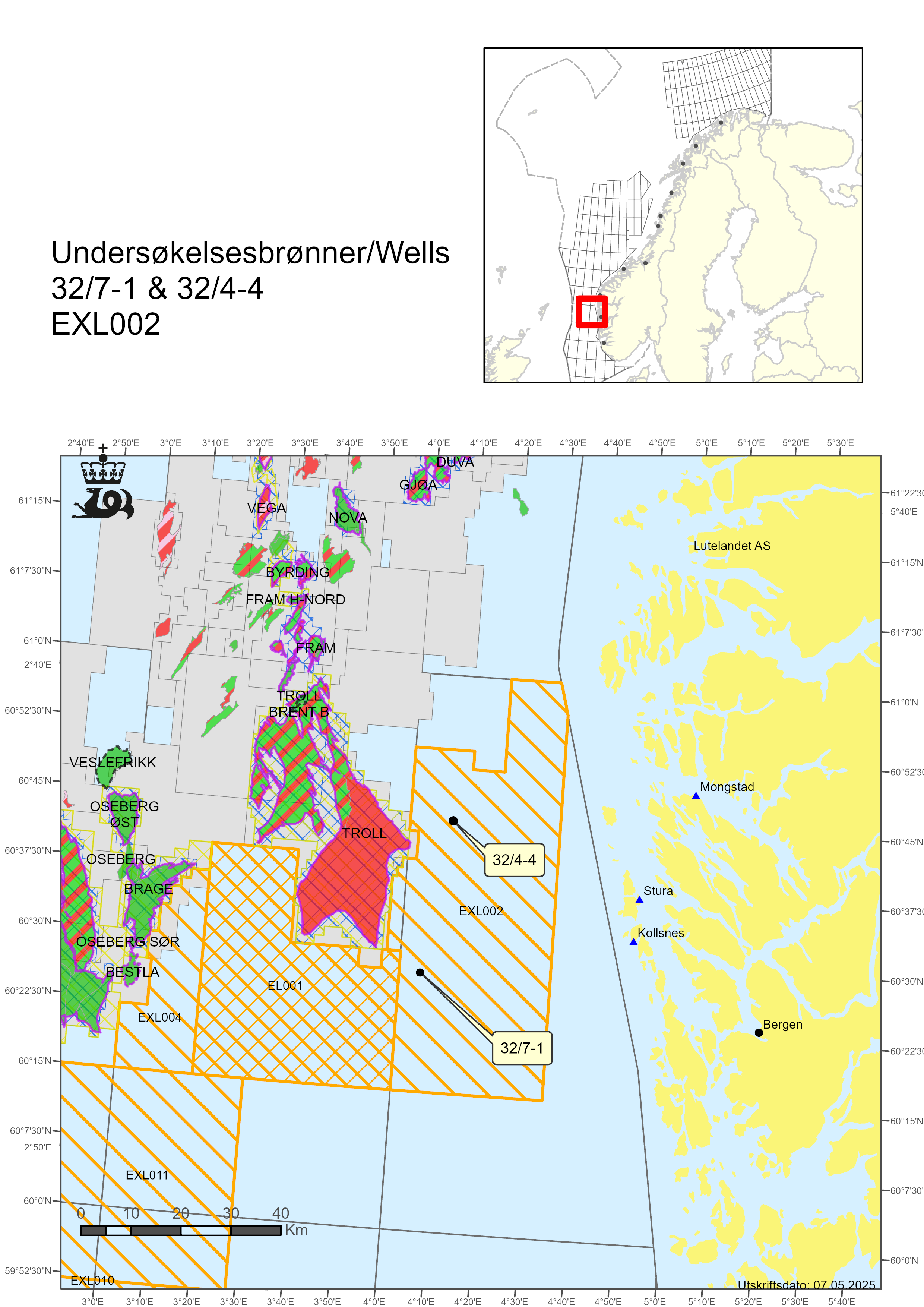The wells 32/7-1 and 32/4-4 proved suitable properties for injection and storage of CO2

Drilling rig Deepsea Stavanger.
5/14/2025 Equinor Low Carbon Solutions (Equinor) has drilled two appraisal wells which indicate that the reservoir is suitable for injection and storage of carbon dioxide (CO2).
The wells were drilled in the North Sea about 20 kilometres east of the Troll A platform, and about 70 kilometres west of Bergen. The DeepSea Stavanger drilling rig was used for the drilling operation.
Wells 32/7-1 and 32/4-4 were drilled in the Gamma and Alpha areas respectively, which together make up a potential CO2 storage site for the “Smeaheia” project. The wells were the first to be drilled in exploration licence EXL 002, awarded in June 2022.
These are the second and third wells drilled to investigate the possibility of commercial CO2 storage on the Norwegian continental shelf (NCS).
Geological information
The objective of well 32/7-1 was to investigate whether Lower and Middle Jurassic reservoir rocks in the Gamma structure are suitable as a storage site for CO2. The well is situated about seven kilometres southwest of well 32/4-3 S, which was drilled by Equinor in 2019 with the partial objective of investigating whether the area was suitable for CO2 storage.
Well 32/7-1 encountered:
- The Draupne Formation (cap rock), 130 metres of homogeneous shale
- The Sognefjord Formation (reservoir), 146 metres of sandstone, good to very good reservoir quality
- The Fensfjord and Krossfjord formations (reservoir), 145 metres of sandstone, good reservoir quality
- The Drake Formation (cap rock), 83 metres of homogeneous shale
- The Cook and Johansen formations (reservoir), 57 metres of sandstone, good reservoir quality
Well 32/7-1 was drilled to a vertical depth of 2036 metres below sea level and was terminated in the Lunde Formation in the Upper Triassic. Water depth at the site is 300 metres.
The objective of well 32/4-4 was to investigate whether Lower and Middle Jurassic reservoir rocks in the Alpha area are suitable as a storage site for CO2. Dry exploration wells have previously been drilled in this area.
Well 32/4-4 encountered:
- The Draupne Formation (cap rock), 142 metres of homogeneous shale
- The Sognefjord Formation (reservoir), 106 metres of sandstone, good to very good reservoir quality
- The Fensfjord and Krossfjord Formations (reservoir), 165 metres of sandstone, good reservoir quality
- The Drake Formation (cap rock), 47 metres of homogeneous shale
- The Cook and Johansen Formations (reservoir), 48 metres of sandstone, good reservoir quality
Well 32/4-4 was drilled to a vertical depth of 1879 metres below sea level and was terminated in the Lunde Formation in the Upper Triassic. Water depth at the site is 315 metres.
Formation pressure data for both wells indicate that the rocks in the Cook and Johansen formations are somewhat depleted, while the depletion increases towards the Sognefjord Formation, where it is greatest.
Extensive volumes of data have been acquired and samples have been taken from the reservoirs and cap rocks in the two wells. Four injection tests were also conducted in 32/7-1, as well as four injection tests in 32/4-4. The preliminary results are positive.
The data will now be analysed in greater detail, and the results will form part of the basis for future investment decisions in Equinor’s “Smeaheia” storage project.
The wells have been permanently plugged and abandoned.

Updated: 5/14/2025